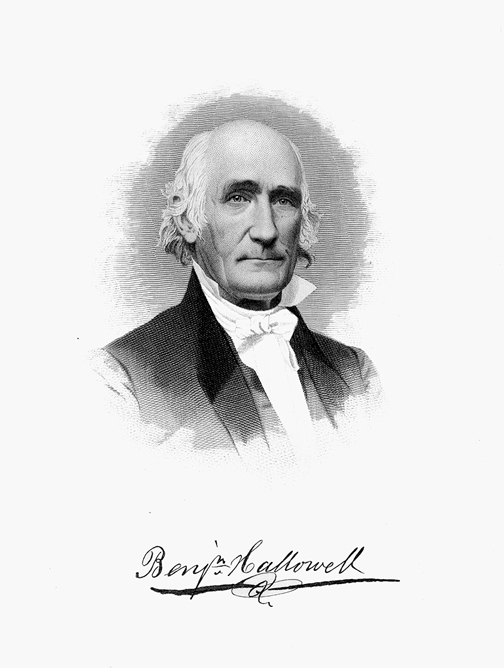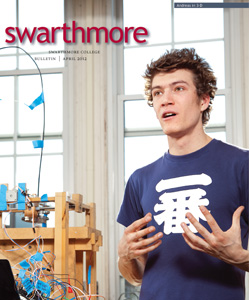150 years ago: Benjamin Hallowell, man of peace
 By 1862, the campaign to create what would become Swarthmore College was renewed, but there were conflicting ideas on the nature of what was then being referred to as “the boarding school.” Some supporters wanted a grammar school, some looked toward a “normal school”—to supply teachers to local Quaker primary and secondary schools. Benjamin Hallowell looked further. In a letter to future Swarthmore President Edward Parrish, Hallowell wrote, “The Institution must, from its commencement, possess faculties for pursuing a liberal and extensive course of study … equal to that of the best Institutions of learning of our County. …”
By 1862, the campaign to create what would become Swarthmore College was renewed, but there were conflicting ideas on the nature of what was then being referred to as “the boarding school.” Some supporters wanted a grammar school, some looked toward a “normal school”—to supply teachers to local Quaker primary and secondary schools. Benjamin Hallowell looked further. In a letter to future Swarthmore President Edward Parrish, Hallowell wrote, “The Institution must, from its commencement, possess faculties for pursuing a liberal and extensive course of study … equal to that of the best Institutions of learning of our County. …”
Hallowell’s words carried weight. He was a well-known scientist and educator. His boarding school in Alexandria, Va., was known particularly for mathematics. Paradoxically for a lifelong Quaker, one of his better-known fellow alumni was Robert E. Lee, future commander of the Confederate Army, who studied mathematics with Hallowell to prepare himself for West Point.
In 1860, Hallowell became the first president of Maryland Agricultural College, now the University of Maryland, on the condition that the school would not employ slave labor. During the Civil War, Hallowell was clerk of the Baltimore Yearly Meeting, a body that included Virginia and Maryland. A confirmed pacifist, Hallowell nevertheless rejoiced when his former pupil Gen. Lee was driven from Pennsylvania.
After the war, Hallowell, acting for the Baltimore Yearly Meeting, wrote to president-elect Ulysses S. Grant, advocating peaceful relations with the Indian nations of the West. Under Grant’s “Peace Policy,” some Indian agencies in the Plains were staffed by Quakers. In 1872, his old friend Edward Parrish, after serving as the first president of Swarthmore College, died in the West while on a mission for the Quakers to broker a peace treaty between the Indian nations of the Plains and the United States.
Hallowell’s last major scientific work Geometrical Analysis (1872) is dedicated “To Swarthmore College, including the Youthful Laborers of both sexes … who are devoting themselves to the pursuit of a knowledge of the True, the Beautiful, and the Good in every Department of Science and Nature.”
 Email This Page
Email This Page